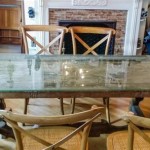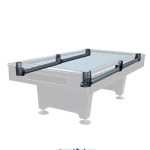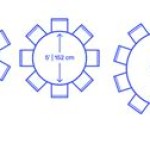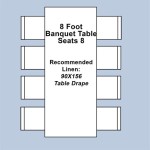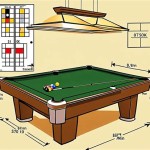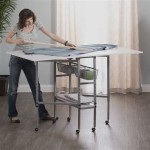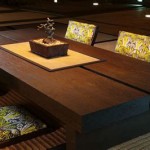End Table Coffee Table Sets: A Comprehensive Buying Guide
The coordinated aesthetic of a living space relies heavily on the careful selection of furniture. Among the most crucial pieces are the coffee table and end tables, often purchased together as a set to ensure visual harmony and functional coherence. End table coffee table sets offer a convenient and stylish solution for furnishing living rooms, providing surfaces for beverages, books, remote controls, and decorative items. These sets are available in a wide array of materials, styles, and sizes, catering to diverse tastes and spatial limitations. This article serves as a comprehensive guide to understanding and selecting the ideal end table coffee table set for a particular living space.
The concept of purchasing coffee and end tables as a set is rooted in the desire for a unified and aesthetically pleasing interior design. Individual tables, while potentially attractive on their own, may clash in terms of material, color, or style when placed together. A set eliminates the guesswork and ensures a cohesive look. Furthermore, sets often provide a cost-effective solution compared to purchasing individual pieces separately. The convenience factor of acquiring multiple coordinated pieces in a single transaction should not be overlooked.
Key Considerations Before Purchasing
Before embarking on the selection process, several crucial factors deserve careful consideration. These factors relate to the available space, the intended use of the tables, and the overall aesthetic of the living room.
Firstly, the dimensions of the living room are paramount. Measure the available space to determine the optimal size and configuration of the coffee table and end tables. A coffee table that is too large can overwhelm the room and impede traffic flow. Similarly, end tables that are too bulky can create a cluttered and cramped feeling. Consider the distance between the sofa and chairs, as well as the placement of other furniture pieces, when determining the appropriate sizes. It is advisable to create a floor plan, either physically or digitally, to visualize the arrangement and ensure that the chosen set fits comfortably within the allocated space.
Secondly, the intended use of the tables must be factored into the decision-making process. Will the coffee table primarily serve as a surface for holding drinks and snacks, or will it also function as a display area for decorative items or a storage space for magazines and remote controls? Will the end tables be used solely for lamps and small accessories, or will they also need to accommodate books, laptops, or other personal items? The answers to these questions will influence the choice of table shape, size, and features, such as drawers, shelves, or lift-top mechanisms.
Thirdly, the existing aesthetic of the living room should be a guiding principle. Consider the style of the sofa, chairs, and other furniture pieces, as well as the color scheme, flooring, and wall decor. The coffee table and end tables should complement the existing elements and contribute to a cohesive and harmonious overall look. For example, a modern living room with clean lines and minimalist decor would benefit from a set with a sleek and contemporary design, while a traditional living room with ornate details and rich colors would be better suited to a more classic and elaborate set.
Materials and Construction
The materials used in the construction of end table coffee table sets significantly impact their durability, aesthetics, and price. Common materials include wood, metal, glass, and various composites, each with its own set of advantages and disadvantages.
Wood is a popular choice for its warmth, natural beauty, and versatility. Solid wood offers exceptional durability and timeless appeal, but it can be more expensive than other options. Hardwoods such as oak, maple, and cherry are known for their strength and resistance to scratches and dents. Softwoods such as pine and cedar are more affordable but may be more susceptible to damage. Wood veneer, which consists of a thin layer of real wood applied to a substrate such as plywood or particleboard, offers a more budget-friendly alternative to solid wood while still providing a similar aesthetic.
Metal, particularly steel and iron, is often used for the frames and legs of coffee tables and end tables. Metal provides strength, stability, and a modern industrial aesthetic. Metal frames can be powder-coated or finished with other protective coatings to prevent rust and corrosion. Metal can also be combined with other materials, such as wood or glass, to create visually interesting and structurally sound designs.
Glass is a popular choice for coffee table tops, particularly in contemporary and minimalist settings. Glass tops are easy to clean and maintain, and they create a sense of openness and lightness in the room. Tempered glass is recommended for safety, as it is more resistant to shattering than regular glass. Glass can also be used in conjunction with metal or wood frames to create a stylish and durable table.
Composite materials, such as particleboard, MDF (medium-density fiberboard), and laminate, are often used in the construction of more affordable coffee table and end table sets. These materials are manufactured from wood fibers or particles that are bonded together with resin. They are typically less expensive than solid wood but can still provide adequate durability and stability. Laminate surfaces are resistant to scratches and stains, making them a practical choice for everyday use.
The construction of the tables is just as important as the materials used. Look for sturdy joinery, such as dovetail joints or mortise-and-tenon joints, to ensure that the tables are built to last. Check the stability of the legs and the overall sturdiness of the frame. Avoid sets with flimsy construction or wobbly legs, as they are likely to deteriorate quickly.
Styles and Designs
End table coffee table sets are available in a wide range of styles and designs, catering to diverse aesthetic preferences. The style of the set should complement the overall decor of the living room and reflect the homeowner's personal taste.
Traditional styles often feature ornate details, such as carved legs, scrolled edges, and antique finishes. These sets are typically made from solid wood or wood veneer and evoke a sense of elegance and formality. Traditional coffee tables may have a rectangular or oval shape, while end tables may have a square or round shape. The color palette for traditional sets is often warm and rich, with tones of brown, mahogany, and cherry.
Modern styles emphasize clean lines, minimalist designs, and geometric shapes. These sets are often made from metal, glass, or a combination of materials. Modern coffee tables may have a rectangular or square shape, while end tables may have a square or round shape. The color palette for modern sets is often neutral, with tones of white, black, gray, and metallic accents.
Contemporary styles blend elements of both traditional and modern designs. These sets may feature a mix of materials, such as wood and metal, and incorporate both clean lines and subtle decorative details. Contemporary coffee tables and end tables are available in a variety of shapes and sizes, allowing for greater flexibility in space planning. The color palette for contemporary sets is often more diverse, with a range of neutral and bold colors.
Rustic styles evoke a sense of warmth, nature, and simplicity. These sets are often made from reclaimed wood or distressed wood, and feature natural textures and imperfections. Rustic coffee tables may have a rectangular or square shape, while end tables may have a square or round shape. The color palette for rustic sets is often earthy, with tones of brown, beige, and green.
In addition to these broad categories, there are also numerous niche styles, such as industrial, mid-century modern, and bohemian. Industrial styles feature raw materials, exposed hardware, and a utilitarian aesthetic. Mid-century modern styles emphasize clean lines, organic shapes, and a retro vibe. Bohemian styles are characterized by eclectic designs, vibrant colors, and a mix of patterns and textures.
The shape of the coffee table and end tables is another important design consideration. Rectangular coffee tables are a popular choice for their versatility and functionality. Square coffee tables are well-suited for smaller spaces or for use with sectional sofas. Round coffee tables create a softer and more inviting atmosphere. End tables are typically square, round, or rectangular, and should be chosen to complement the shape of the coffee table and the overall layout of the room.
Beyond the basic shape and style, there are also numerous functional design features to consider. Some coffee tables have lift-top mechanisms that allow them to be raised to a comfortable height for working or eating. Other coffee tables have drawers or shelves for storage. End tables may have built-in outlets or USB ports for charging electronic devices. The choice of these features will depend on the individual needs and preferences of the homeowner.

Mainstays 3 Piece Coffee And End Table Set Rustic Brown Com
Homcom Set Of 2 Nesting Table Coffee End Modern For Living Room Furniture Decor Gold Tempered Glass Aosom

Claremont Rustic Wood Coffee Table And End Set With Drawer White Alaterre Furniture Target

To Own Ashley Furniture Murphy Coffee End Tables Set Of 3

Hd 1521 3pc Coffee Table Set Homey Design Inc

Furniture Canyon Round Table Set 2 Pc Coffee End Created For Macy S

Bowery Hill Traditional 3 Piece Glass Coffee And End Table Set In Silver Com

Vecelo 3 Piece Occasional Table Set With Coffee 2 End Tables Brown Khd Mx Ct03 Brn Dc Ns01 A2 The Home Depot

Flash Furniture Hampstead Collection Coffee And End Table Set White Laminate Top With Brushed Gold Crisscross Frame 3 Piece Occasional Target

Round Coffee Tables With Drawer Removable Set Of 2 End Table Nesting Storage For


